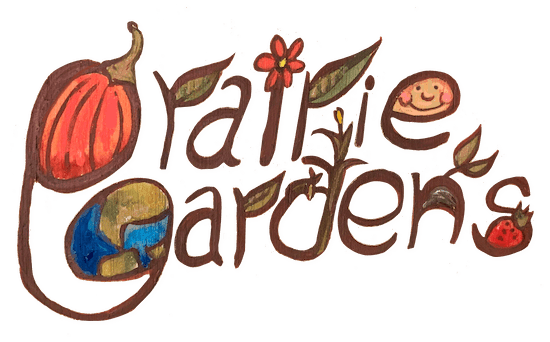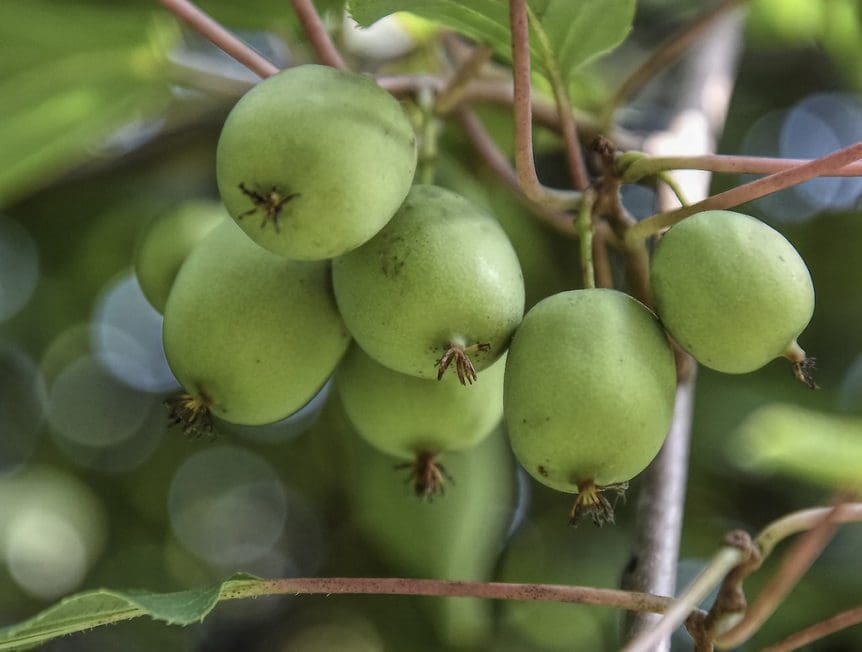In many ways, growing kiwi fruit is much like growing grapes. They are vigorous growers and need to be properly pruned, trained, and trellised. But, when they’re treated right, you’ll have more fruit than you can handle. Growing kiwi fruit should be on every gardeners to-do list!

Variety selection is everything. For the Edmonton region (Canadian Hardiness Zone 3) we recommend Issai, which is a self-fertile variety – with exceptional hardiness! They have eight times more vitamin C than oranges! They can be grown much like grapes on a trellis system or climb a pergola. Once established, this vine grows fast and can bear up to 100lbs of fruit each year. They are hardy to -40C, you will have some tip kill on the tender tips of the vines.
Order Kiwi from our Online Shop!
The fruits are much smaller than the fuzzy New Zealand kiwis at the grocery store. The green fruits of hardy kiwis are only slightly larger than a grape, but they’re produced prolifically. Expect dozens of one to two inch long fruits to be produced within three or four years of planting. The best production occurs when the vines are about eight years old, and you can expect them to produce for forty years or more. In Edmonton area – they will ripen by the first week of September. The fruit is delicious – much better than any kiwi you would buy at the grocery store!
Fast Growing
Hardy kiwis are fast growing (like, seriously fast!). You’ll need a sturdy pergola or trellis to support the growing vines. This is a high maintenance plant that requires regular care and upkeep. Because it is a climbing vine it should be planted next to a support structure. It prefers to grow in moist conditions and shouldn’t be allowed to dry out. It can grow to a height of 20ft and a spread of 10ft. Growing kiwi fruit means you’ll also be growing fragrant flowers. The flowers, which appear in early summer, are small and white. Their fragrance is similar to lily of the valley. The fruits continue to mature all summer long and are ready to harvest in late fall. When growing kiwi fruit, site the vines in full sun. Try to find a location that’s protected from late spring frosts that might damage newly emerged spring growth. Space vines about ten to twelve feet apart, on center. Make sure they’re regularly watered until established. In the fall – cover roots with 12” deep mulch like wood shavings.
Pruning is a must
For many people growing kiwi fruit, pruning is the most challenging task.
- The vines must be pruned with a sharp pair of high-quality pruners when they’re dormant in the winter, and again two or three times throughout the summer.
- In winter, prune out any branches that produced fruit the previous season, as well as any dead or crossed branches.
- The one-year-old branches produce the most fruit, so don’t prune them out, instead trim them back to the eighth node up from the base of the plant (the nodes look like little nubs along the branch). These nodes will push out new fruiting spurs in the spring.
- Summer pruning involves removing any long, arching vines that extend beyond the developing fruits. Any non-flowering vines that extend off the trellis can be removed in the summer as well.
If your hardy kiwi fruit aren’t ripe when frost threatens in the fall, harvest them and allow them to ripen on the kitchen counter. Make sure all the fruits are harvested before frost strikes.
Hardy kiwis are among the most pest-free fruits you can grow. The plants are not fussy, nor do they require any spraying. Oh, and they’re pretty, too!

